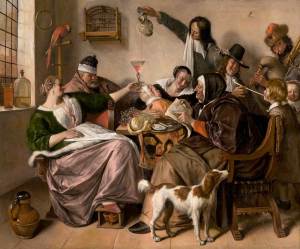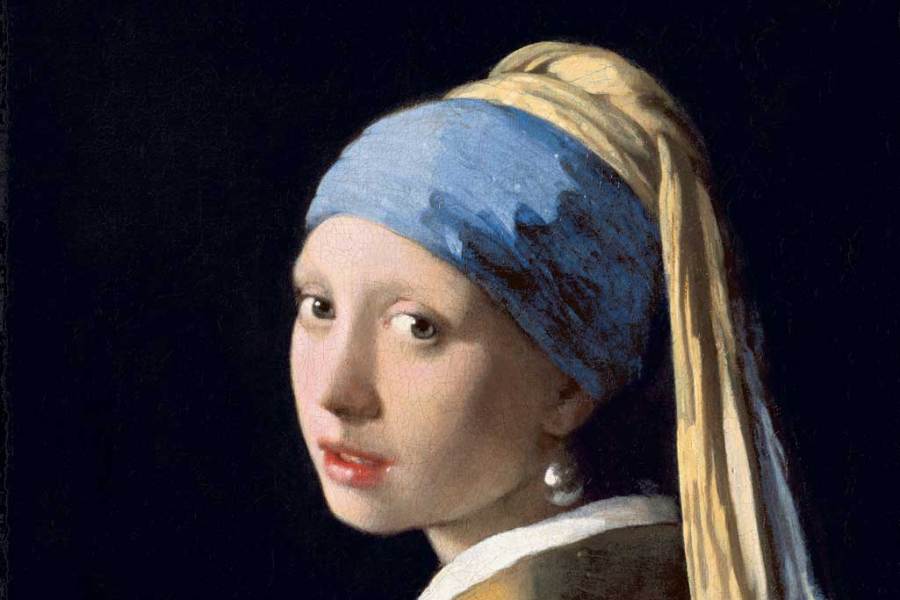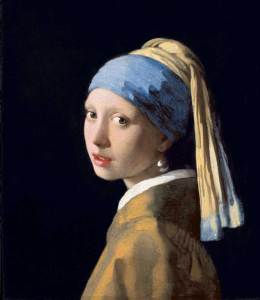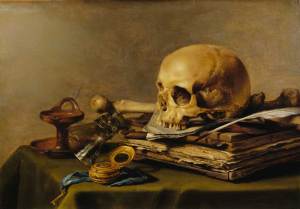The most visited exhibition of 2012 has just moved to its next location at the Frick Collection in New York. The renovation of the Mauritshuis in The Hague (to be completed by mid-2014) has offered the museum’s Old Master gems a rare chance to go on tour – and it has been grand to say the least. On its way through Japan last year it was shown at the Tokyo Metropolitan Art Museum, and drew over 10,500 visitors per day – the highest of any exhibition last year.
The Frick, recognising the popularity of the travelling exhibition that was soon to grace its walls, requested an additional five works from the Mauritshuis and committed a second gallery to the event. The exhibition was relocated to this additional gallery so that the Oval Room could be dedicated to Vermeer’s Girl with a Pearl Earring – a sign of the painting’s increasingly celebrated status as the ‘Mona Lisa of the Netherlands’.
The dark rounded walls of the Oval Room serve to extend the deep green painted abyss behind the girl so that she remains the undisputed centrepiece, a brilliant figure carved out of darkness. The painting epitomises the quiet harmonies and virtuoso rendering of light that have made Vermeer arguably more popular today than Rembrandt, whose contrastingly emotive, splendorous works hang in the next gallery. Inviting this comparison (or competition), the Frick’s own three Rembrandts and three Vermeers have been rearranged in their usual gallery to hang opposite one another.
The four Rembrandts on loan from the Mauritshuis also hang side by side, illustrating how his handling of paint became increasingly rough with impasto over time. Pivotal in this development is Susanna (1636), where the texture of Rembrandt’s scratchy preparatory etchings is transferred into her flesh, so subtle it is hard to observe in reproduction.

‘As the Old Sing, So Pipe the Young’ (c.1665), Jan Steen Royal Picture Gallery Mauritshuis, The Hague
The ‘Golden Age’ of Dutch prosperity in the 17th century created a generation of middle-class patrons who demanded art that address newly popular Dutch themes. Jan Steen’s ‘As the Old Sing, So Pipe the Young’ (c. 1665) is a perfect example of the humorous ‘how not to behave’ genre scenes, with moralising undertones, that flooded the market. It fills the far wall of the East Gallery with its hilarious chaos. Inspired by the various characters that inhabited the inn Steen owned, the painting invites the viewer in, to follow its various stories.
Engaging the viewer in up-close observation is part of the mission of this exhibition. Still life paintings by Pieter Claesz and Adriaen Coorte, in particular, require careful inspection in order to spot the subtle signs of degradation that carry their message of life’s transience.
In an intriguing experiment, the exhibition also includes a contemporary film, which plays in the multimedia room before the entrance to the main exhibition. The film, Transforming Still Life Painting (2012) by Rob and Nick Carter, brings Ambrosius Bosschaert the Elder’s still life, Vase of Flowers in a Window (1618) – too fragile to leave Mauritshuis – to life. Over three hours, it animates its insects, slowly decomposes the flowers and shows the cycle of the day. The transience of life is put into real-time. Nick Carter explained that this was part of an effort to train the viewer to look deeper into the exhibition’s paintings: ‘To take us out of the habit of only lingering for an average of 4–6 seconds’. It reminds exhibition-goers to take advantage of this rare visit of 17th-century Netherlandish art, by appreciating it as a 17th-century Netherlander might have done.
‘Vermeer, Rembrandt, and Hals: Masterpieces of Dutch Painting from the Mauritshuis’ is at the Frick Collection in New York until 19 January 2014.
Unlimited access from just $16 every 3 months
Subscribe to get unlimited and exclusive access to the top art stories, interviews and exhibition reviews.
















![Masterpiece [Re]discovery 2022. Photo: Ben Fisher Photography, courtesy of Masterpiece London](http://www.apollo-magazine.com/wp-content/uploads/2022/07/MPL2022_4263.jpg)
Is the Stirling Prize suffering from a case of tunnel vision?